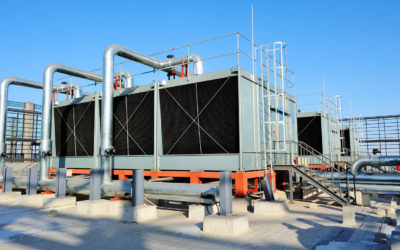Fall is just around the corner already. With school starting in the next few weeks, many of these facilities and other commercial facilities will start to get their heating systems ready for colder weather. This article will focus on boiler startups after the long summer shutdown and some tips to keep these systems operating reliably.
Water treatment during startup depends largely on the quality of the system’s layup. While not the focus of this article, proper layup in the spring is imperative to proper protection of the boiler while it is in storage, whether that be a dry or wet layup, and that translates into a good startup.
How good was the boiler layup? That can determine what problems may surface during startup.
A good wet layup will actually require the boiler chemical levels for sulfite and alkalinity to be reduced to normal operating levels. If these chemistry levels are low, there may be active corrosion in the boiler that need to be dealt with prior to startup.
On a dry layup, were desiccants used? These need to be removed from the boiler prior to filling. This may be a good time to also inspect the boiler. If a volatile layup inhibitor was used, these can often be left in the boiler when filled with water. If nothing was done, again there may be active corrosion in the boiler from layup.
Whether in the spring or fall, waterside and fireside surfaces should be inspected and cleaned annually. A visual inspection provides an early warning that the vessel needs repair, has water treatment problems, or that combustion needs adjustment. All of this will help the system run at maximum efficiency during heating season.
THE BOILER STARTUP
A review of boiler startup procedures can be summarized in the following list. Your actual system may vary but this guide provides an outline of common items to check. For a dry start, the boiler will have to be filled with water, for a wet layup boiler, the water level may have to be dropped and chemistry adjusted before bringing online.
TYPICAL STARTUP PROCESS
- Check all valves and place in their startup position
- Open the sight gauge and water column high- and low-water shut-off valves. Make sure the water level safety controls are blown out.
- Close the bottom blowdown valves, then open the upper drum vent valves.
- Start filling with soft water.
- Manually inject boiler water treatment chemicals including oxygen scavenger chemicals, so that the chemicals are added with the fill water.
- Once full to the operating level, open the fuel system and fire the boiler. Carefully bring the pressure up to 10-15 PSIG, with the vent valve open. The boiler’s warm-up curve should be strictly followed. The standard warm-up curve for a typical boiler is not to increase the boiler water temperature over 100°F per hour. Check your manufacturers’ guidelines.
- After the pressure reaches 10-15 PSIG, close the drum vent and slowly bring the boiler up to operating pressure.
- Collect a boiler water sample and test for the proper chemical concentrations. Adjust as needed.
While this procedure is mainly focused on the facility operator, as a water treatment provider, you can be asked to comment on these procedures and also assist with the proper startup chemistry guidelines. Being familiar with the startup processes can help you in the overall servicing of your customers and being able to answer their questions.
In summary, the proper startup of a boiler system is one step in the many required throughout the year to keep the boiler operating efficiently. Be it the startup, shutdown and layup, or operating throughout the year, each of these work together to keep a system problem free for the long haul. Proper chemistry is very important, but so are the mechanical and operating procedures in the facilities that operate these boilers.
HAVE A SAFE BOILER SEASON WITH A PROPER STARTUP. DOWNLOAD YOUR COPY OF OUR BOILER STARTUP CHECKLIST TODAY.



